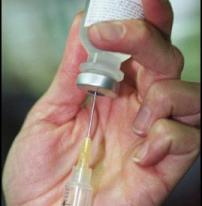US spend more to protect animal health

Americans increased their spending nearly 10% in 2006 to protect the health of their pets and farm animals, according to the Animal Health Institute’s Market Sales Report.
“Americans recognize the important role of animal medicines, both to
extend the quality of length of life for their pets or to keep farm animals
healthy and contribute to a safer food supply,” said AHI President and CEO
Alexander S. Mathews.
“Animal health companies have responded by bringing
new and innovative products to the market for both companion animals and farm
animals.”
Consistent with past years, products for companion animals
accounted for approximately 53% of the total.
The three product
categories for animal health products are biologics, which increased nearly 12%,
pharmaceuticals, with a sales increase of 10% and feed additives with a 5%
increase in 2006.
Raw
sales data was provided to AHI by CEESA, a non-profit international association
based in Belgium. CEESA collects sales data on the animal health market in
Europe as well.
Total sales for the entire US animal health products
industry were tabulated based on projections made by AHI using sales data
collected from CEESA.
Sales are for products priced at the manufacturer’s
level. CEESA reporting companies represent 79% of the US animal health products
industry.
Pharmaceuticals
Sales increased by 10%. Estimated
sales for the United States market for this category were more than $4.0
billion.
Sales in this category were impacted by continued increases in
external and internal parasiticides for companion animals.
Feed
aditives
Feed additives sales rose 5.6% in 2006, with sales of $576
million. Nutritional feed additives, principally vitamins and minerals, are not
included in these estimates.
New product introductions along with price
stability contributed to the increase.
Biologicals
This
category includes sales of products used to create immunity to disease in both
livestock and pets. Biologicals include vaccines, bacterins and antitoxins
licensed by the United States Department of Agriculture’s Animal and Plant
Health Inspection Service.
Sales in this category
show a gain of 12% in 2006. Sales increased in nearly every species, led by dogs
and cats.











